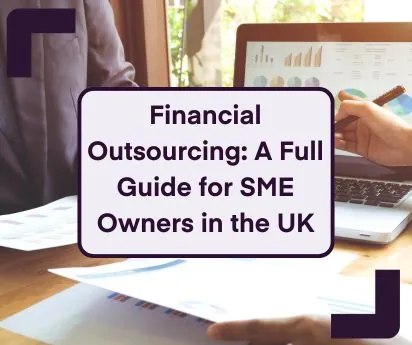
By The Book: Legitimate ways to reduce your tax bill
18 May 2019In the world of tax, it can be said that if you do not plan ahead to reduce your tax bill, it is certain that you will pay more tax than you should do.
If you are a higher rate tax payer, a sole trader or have a company with a March year end, our team of tax accountants have provided an all-encompassing article which details how you can reduce your tax bill.
Looking for expert tax advisory? Get in touch with our team and see how we can help your business.
Income recognition policy
If you normally receive money before carrying out work, the income should be shown in your accounts when you’ve performed the work. Furthermore, this should be matched with the costs and expenses of doing the work.
By not reviewing this, you could be paying more tax earlier than you should do.
So, let’s say you’ve received £5,000 in March for training courses or website development work to be delivered in say April, make sure this is not shown as income (hence profits) in your March accounts to avoid overpaying your taxes early.
Frequently overlooked expenses
Where you’ve incurred expenses wholly and exclusively for the purpose of your trade or business and you some evidence to back this up, these should be claimed first.
Then review and claim the following seven areas which are often overlooked:
-
Provision for directors remuneration to be paid up to nine months your accounting year;
-
Bad debt provision (make sure you have taken steps to recover the money);
-
Interest paid, including on loans you have made to the business;
-
Use of home as office (reasonable amounts only to avoid more tax later);
-
Lease premiums;
-
Warranty provisions, and
-
Stock provisions, especially in cases where items of costs are worth less than they cost.
Use capital allowance or crystallise losses
You are allowed tax free capital gains allowance of £11,700. Just like muscle, if you don’t use this allowance, you lose it.
If it makes financial sense to sell some of your investments, then doing so just before the tax year and just after the tax year will reduce your tax bill.
Why? Because you get to use two allowances and defer the tax on the second sale until January 2021.
And depending on your level of gains, you may not pay a penny in tax.
Let’s say you have gains of £23,400 from your investments and you decide to sell all in one go. You’ll pay £2,340 in capital gains tax (£23,400 minus £11,700 taxed at 20%).
But if you spread the gains over two years and you sell £11,700 in March 2020 and another £11,700 after the year-end in April 2020, you will have no tax to pay. This is the power of planning. By failing to plan, you will pay £2,340 more tax than you should have.
Where your investments have not done well or have fallen in value as the case may be for many crypto currency or bitcoin investors, then selling them before the tax year means that you get to crystallise any losses you’ve made which can then be used against any profits from your other investments or carried forward into future years.
Use and leverage your income tax allowances
The first thing to consider when trying to reduce your tax bill is your level of income and the total tax-free allowances you get.
So, if you add up the income tax allowance, savings allowance and dividends allowance, you get about £14,850 tax free income for single person and £29,700 for married couple.
The action to take here is to generate sufficient income to fully utilise the personal allowances.
However, for higher rate taxpayers, the personal allowance is reduced by £1 for every £2 of income above £100,000. What this means is that for those with income band of £100,000 to £123,700, the effective rate of income tax is 60%.
The action point here is to reduce your taxable income by making pension contributions or transferring other income producing assets to your spouse. However, you do need to take care with this and get expert advice/help.
Corporate tax relief can reduce your tax bill
Normally when you incur a legitimate business expense wholly and exclusively for the purpose of your trade, you get to claim 100% of these expenses against your business income to reduce your tax bill.
But what if the tax rules allow you to claim a lot more than 100%? Say you get to claim £230 even though you’ve only physically spent £100?
That’s exactly what the Research and Development (R&D) tax relief allows you to do.
So, if you have a company in the creative, engineering, software or any innovative industry where you’re solving difficult problems for customers and raising the bar in your industry, please speak to your accountant or a specialist tax adviser about R&D tax relief before 31 March.
Many companies miss out of this valuable relief due to lack of awareness as well as the misconception that R&D is only available to big Laboratories and pharmaceutical industries.
Possible £4,800 tax saving through IHT planning
No one likes to talk about death. But it’s a reality. And very often people pay unnecessary inheritance tax by not claiming the right reliefs.
Gifts of up to £3,000 per year can be made free of Inheritance Tax. Unlike most of the tax allowances, the limit increases to £6,000 if the previous year’s annual exemption was not used.
So, you get to use last year’s allowance of £3,000.
A married couple can therefore make Inheritance Tax exempt gifts including cash totalling £12,000 per tax year.
This simple planning can save a possible tax bill of £4,800 in the event of your demise.
Review your pensions and consider making a contribution
Whilst pensions might seem like a rather dull and dry subject, they do provide one of the most tax efficient ways to save. And such savings can help to reduce your tax bill.
Pension contributions currently receive up to 45% tax relief.
For example, a £1,000 investment into a self-invested personal pension (SIPP) benefits from 20% basic rate tax relief (£250) added automatically.
Higher-rate taxpayers can claim up to a further £250 in tax relief, while 45% rate taxpayers can claim back up to £312.50.
Contributions in excess of the annual allowance (currently £40,000 for most people) will be subject to a tax charge. Remember you can’t normally take money out of a pension until you’re 55 (57 from 2028).
But if you’re a director of your own company, it is possible for the company to pay into your pension pot (say SIPP or SSAS) for you as part of your remuneration.
Then instead of merely leaving the funds in there until you’re say 55, you can leverage the funds and get a second bite of the tax cherry.
How? These pension schemes (say a SIPP) subject to certain rules can be used to buy, say, a commercial property and the rental income gets additional tax benefits.
No bad is it?
But as with all the guidance and tips given in this article, please do speak with a qualified professional before proceeding with any tax or investment decisions.
Utilise the £20k tax efficient investment allowance
If you’re considering making a tax efficient investment before the tax year ends, consider making full use of the stocks and shares individual savings account (ISA) allowance.
If you’re over 18 and a UK resident, you can contribute up to £20,000 to a stocks and shares ISA this tax year and there’s no UK income or capital gains tax to pay on your investments.
And although it’s designed for the long term, you can take money out if you really need to.
A word of caution here though - you should absolutely get in touch with our MBA-qualified business consultant first about your investment requirements.
Explore Enterprise Investment Scheme (EIS)/Seed Enterprise Investment Scheme (SEIS)
The above schemes offer some really generous tax breaks in the form of income tax refunds, free capital gains tax and free inheritance tax for investors.
Essentially if you invest in an SEIS registered business, you get to claim 50% of the investment back against any tax income tax you’ve already paid at source.
Plus, you don’t pay any capital gains tax if you sell the investment at a profit after three years.
There are conditions to meet, so again, please speak with our business consultant before proceeding.
His team have worked with an extensive number of clients on EIS and SEIS, but we have seen how wrong, and ultimately expensive, it can go for some businesses who try to proceed without guidance.





















